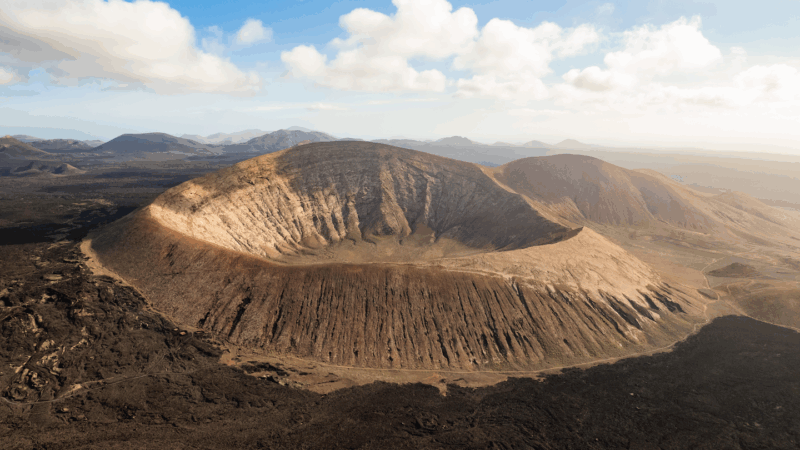Scaly sailors appear to have made a record-setting ocean voyage. Tens of millions of years ago, iguanas in North America crossed the Pacific Ocean. Clinging to plants washed out the sea, they traveled one-fifth of the way around the world. This epic sea voyage ended in islands of the South Pacific. There they settled. This extraordinary trip appears to be the longest move ever made by land vertebrates.
“It’s just a truly incredible example of long-distance dispersal,” says Ethan Gyllenhaal. He did not take part in the new research. An evolutionary biologist, he studies how animals evolve. He works at Texas Tech University in Lubbock.
All members of the iguana family live in the Americas — with one big exception. Four iguana species dwell on the Pacific island nation of Fiji. These reptiles belong to the genus Brachylophus. Their closest relatives live in North America. So how they got to Fiji was a mystery.
There had been two main hypotheses for how they got there, says Simon Scarpetta. He’s an evolutionary biologist in California at the University of San Francisco. One idea: They might have drifted over from the Americas on plants. The other option: Their ancestors — now extinct — might have migrated a shorter distance — from Asia or Australia.
Scarpetta’s team looked for clues in the animals’ family tree. For this, they studied the genomes, or genetic instructions, of 200 species of iguanas and related lizards. Fijian iguanas are most closely related to desert iguanas (a Dipsosaurus species), they found. Those live in Mexico and the American Southwest.
The scientists paired these results with where iguana fossils had shown up in the past. That pointed to Fiji’s ancestors as having rafted across the ocean from the West Coast of North America.
The team thinks the lizards set sail between 31 million and 34 million years ago. This split the iguana family tree. Brachylophus and Dipsosaurus evolved separately.
The team shared its new findings March 17 in the Proceedings of the National Academy of Sciences.
A record-setting voyage
That epic Pacific move would have spanned more than 8,000 kilometers (5,000 miles). That’s the longest travel known among landlubber vertebrates. The closest competitors appear to be different lizards. Some other animals, including trapdoor spiders, also have made long voyages.
Rayna Bell is an evolutionary biologist who did not take part in the study. She works at the California Academy of Sciences in San Francisco. It’s hard to figure out the exact distance the seafaring lizards traveled, she says. Other islands that might have served as stepping stones could have disappeared over time.
The farther we look back in time, the less evidence that’s available, she says. “The planet has changed so much.”
Iguanas may be especially well-suited for long trips at sea. Plant-munching iguanas could eat part of their raft along the way. Or — like some species do today — they might become sluggish and fast for part of the trip. They also may resist heat and dehydration. Most iguanas alive today live on islands. Some in recent decades have been observed colonizing new islands via rafts of plants.
If you had to pick vertebrates that could survive rafting across an entire open ocean, Scarpetta says, “iguanas are a great choice.”
Surviving a long float across the oceans is a super rare, unlikely event, Gyllenhaal says. But, he adds, the new findings show how a chance event can play out over millions of years. Big things in evolution can happen during these long lengths of time. “You’ve got a lot of opportunity for these very small-probability things to occur.”

















